Which is better? Crowdfire vs Hootsuite, the battle of the social media managers

Comparing Crowdfire and Hootsuite: A Detailed Analysis of Usefulness, Cost, and Benefits
In the world of social media management, businesses and individuals alike often find themselves overwhelmed with the sheer number of platforms they need to maintain. Tools like Crowdfire and Hootsuite have emerged as essential resources for managing social media presence efficiently. This article provides a comprehensive comparison of Crowdfire and Hootsuite, focusing on their usefulness, cost, and benefits. By the end, you’ll have a clearer idea of which tool may be the better option for your specific needs.
1. Overview of Crowdfire and Hootsuite
Crowdfire
Crowdfire is a social media management tool that started as a platform for managing Twitter followers but has since evolved to support multiple social networks. It is particularly well-known for its content curation capabilities, allowing users to find and share relevant content easily. Crowdfire’s key features include social media scheduling, content discovery, and analytics, making it a popular choice for small businesses and individual users looking to streamline their social media efforts.
Hootsuite
Hootsuite is one of the oldest and most established social media management platforms. It offers a comprehensive suite of tools designed for businesses of all sizes, from small startups to large enterprises. Hootsuite’s platform allows users to manage multiple social media accounts, schedule posts, track performance through detailed analytics, and collaborate with team members. Its extensive integrations with other tools and platforms make it a versatile option for those looking to manage complex social media strategies.
2. Usefulness
Crowdfire’s Usefulness
Crowdfire excels in several areas, particularly in content curation and engagement tracking. Here’s a breakdown of its usefulness:
- Content Curation: Crowdfire offers suggestions for articles and images that are relevant to your audience. This feature can save users time by reducing the need to search for shareable content manually.
- Automated Scheduling: The tool provides an easy-to-use interface for scheduling posts across multiple social platforms. Users can set specific times for their posts or use Crowdfire’s automatic scheduling feature, which chooses the best times for engagement.
- Engagement Tracking: Crowdfire allows users to monitor mentions, comments, and direct messages across various platforms. This feature ensures that you can respond promptly to your audience, fostering better engagement.
- Follower Management: Although it started as a Twitter-centric tool, Crowdfire still offers robust features for managing followers, including unfollowing inactive or irrelevant users.
- Multi-Platform Support: Crowdfire supports major social networks like Facebook, Twitter, LinkedIn, and Instagram, as well as less common platforms like Pinterest and WordPress, making it versatile for different social strategies.
Hootsuite’s Usefulness
Hootsuite offers a broader range of features, which makes it suitable for more complex social media needs. Here’s how it stands out:
- Comprehensive Dashboard: Hootsuite’s dashboard allows users to view and manage all of their social media accounts from one place. This unified view makes it easier to oversee all social activities without switching between platforms.
- Scheduling and Automation: Like Crowdfire, Hootsuite offers robust scheduling options. However, Hootsuite goes a step further with features like bulk scheduling, which allows users to upload and schedule hundreds of posts at once.
- Advanced Analytics: Hootsuite provides detailed analytics that help users track the performance of their social media campaigns. These analytics are more advanced than Crowdfire’s, offering insights into audience demographics, engagement trends, and ROI.
- Team Collaboration: Hootsuite supports team collaboration, allowing multiple users to work on social media campaigns simultaneously. This feature is particularly useful for larger organizations with dedicated social media teams.
- Integration with Other Tools: Hootsuite integrates with over 150 apps, including Google Analytics, Slack, and Asana. This integration capability makes it easier to manage broader digital marketing efforts from one platform.
Cost Comparison
When considering the cost, it’s important to look at both the pricing tiers and the value provided by each platform.
Crowdfire’s Pricing
Crowdfire offers four main pricing tiers:
- Free Plan: Limited to 1 account per social network and basic features.
- Plus Plan ($7.48/month): Supports up to 5 accounts per social network and unlocks additional features like scheduling and more content curation options.
- Premium Plan ($37.48/month): Supports up to 10 accounts per social network, includes advanced analytics, and offers more detailed scheduling features.
- VIP Plan ($74.98/month): Supports up to 25 accounts per social network, includes all premium features plus priority support and additional team members.
Crowdfire’s pricing is relatively affordable, making it a great option for small businesses and individual users. The free plan is particularly appealing for those just starting with social media management, though its limitations may prompt users to upgrade as their needs grow.
Hootsuite’s Pricing
Hootsuite also offers a range of pricing options:
1. Free Plan: Limited to 2 social accounts and 5 scheduled messages.
2. Professional Plan ($99/month): Supports up to 10 social accounts, unlimited scheduling, and access to basic analytics.
3. Team Plan ($249/month): Supports up to 20 social accounts, includes team collaboration features, and provides advanced analytics.
4. Business Plan ($739/month): Supports up to 35 social accounts, includes additional features like custom branding, and offers premium support.
5. Enterprise Plan (Custom Pricing): Tailored for large organizations with advanced needs, includes custom analytics, team management tools, and security features.
Hootsuite’s pricing is significantly higher than Crowdfire’s, especially for the Team and Business plans. However, the added cost comes with a range of advanced features that may justify the expense for larger businesses or those with more complex social media strategies.
Benefits
Benefits of Crowdfire
- Affordability: Crowdfire’s lower pricing tiers offer great value, especially for small businesses and individual users who need basic social media management features.
- Ease of Use: Crowdfire’s user-friendly interface is easy to navigate, even for those who are new to social media management tools.
- Content Curation: The platform’s content curation feature helps users discover relevant content quickly, which can be a huge time-saver.
- Follower Management: For those who are particularly active on Twitter, Crowdfire’s follower management tools can be very beneficial.
- Flexible Plans: Crowdfire offers flexible pricing plans that cater to different needs, allowing users to scale their usage as their social media presence grows.
Benefits of Hootsuite
- Comprehensive Features: Hootsuite’s extensive feature set makes it a powerful tool for managing complex social media strategies across multiple platforms.
- Advanced Analytics: The platform’s in-depth analytics provide valuable insights that can help businesses refine their social media campaigns and improve ROI.
- Team Collaboration: Hootsuite’s collaboration tools are ideal for larger teams, enabling multiple users to work on social media campaigns simultaneously.
- Integration Capabilities: Hootsuite’s ability to integrate with a wide range of other tools and apps makes it a versatile addition to any digital marketing strategy.
- Scalability: Hootsuite is designed to grow with your business, offering scalable solutions that can meet the needs of small businesses and large enterprises alike.
Which is Better?
Choosing between Crowdfire and Hootsuite ultimately depends on your specific needs, budget, and the complexity of your social media strategy.
- Crowdfire is an excellent choice for small businesses, startups, and individual users who need a cost-effective and easy-to-use tool for managing their social media presence. Its content curation features, follower management tools, and affordable pricing make it particularly appealing for those who are just starting out or have simpler social media needs.
- Hootsuite, on the other hand, is better suited for larger businesses and organizations with more complex social media strategies. Its comprehensive feature set, advanced analytics, team collaboration tools, and extensive integrations justify the higher price point, especially for businesses that require detailed reporting and multi-platform management.
Conclusion:
In summary, Crowdfire is the better option for users who prioritize affordability, ease of use, and content curation, making it ideal for smaller operations or those new to social media management. Hootsuite, while more expensive, offers a more powerful and feature-rich platform that is better suited for larger organizations or those with more complex social media needs.
Ultimately, the decision between Crowdfire and Hootsuite should be based on the scale of your social media operations and the specific features that matter most to your business. Both tools offer significant value, but their appeal varies depending on the size and scope of your social media strategy.



